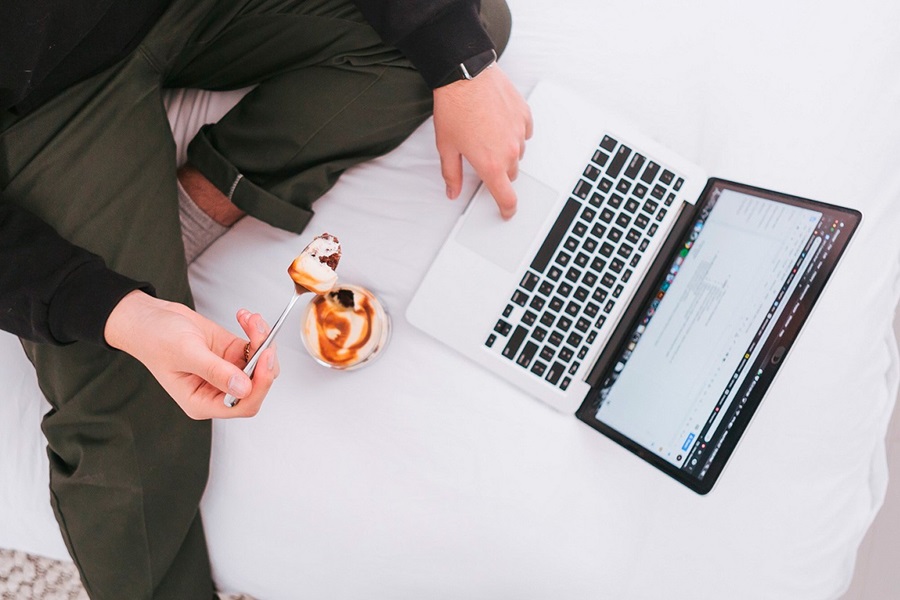We believe behavioural evidence has a significant role to play to help us see what's happening clearly and to develop growth strategies and responses to them. We have focused on insights that truly reveal what happens to people’s FMCG purchase and consumption habits whilst staying at home, as a way to predict what consequences to expect in future behaviour.
This week we look at snacking and stocking up, and how these are being impacted by our behaviour in lockdown. We show that growth is not equal across demographics and how men increased their TV viewing in China during lockdown. We analyse consumer packaged goods (CPG) pricing and show what this looks like for all categories.
This week’s ten insights around purchase and consumption behaviour and COVID-19:
1. We start by looking at the latest reported daily deaths by country and region, and the models some countries are using to predict the next few weeks. We know that comparable and fair measurement is hard, whilst models are subjective. This is true for any data and any model – from understanding COVID-19 trajectories, to determining marketing effectiveness. You really need to know what is and isn’t being measured to be able to compare countries. Also, what assumptions are being used in a model.
2. We show four potential ways people can buy categories based on price, but these are all abnormal. The normal price distribution for all CPG categories is set by the brand leader and the competition works around it. You will see variation, but the general shape will remain constant. Price strategies will need to be adjusted but remember the lowest price is never the most popular.
3. From Spain we look at the volume purchased in March for four different food categories and then the in-home consumption of these categories during the first three weeks of lockdown. We see a highly variable stock level hinting at a different post-COVID scenario, with only one of the four displaying consumption at the same rate as purchase. We recommend showing more ideas to consumers on how to use your category – creating higher consumption rate seems more important right now.
4. In the US there has been a reduction in spend of ~$400 per household per month, with a reduction across credit card and debit card spending as well as ATM withdrawals. As always there are winners and losers, with travel and restaurants down significantly whilst grocery is up. Everywhere in the world people are spending less money than normal despite the rising grocery food bill. But recessions don’t impact everyone equally. We will need to understand income levels and confident to be able to assess the nest way to market in the future. Some people will have extra money; many will be in trouble; most will be somewhere in between.
5. Next, we see how weekly in-home snacking occasions has changed week-by-week in lockdown in France, Spain and the UK. In the first week there was a slight increase between 5-10%, by week 5 this has risen to 50% as we have become accustomed to our new routines.
6. We predict potential retail channel shares based on different scenarios of when lockdown restrictions will be lifted by age, with online the potential big winners. Whatever the government decides on lifting the lockdown will have a big impact on the retail structure and growth rates.
7. In lockdown everyone is watching more TV (and spending more time on their phones and sleeping more) and based on data from China the viewing figures show a bigger increase amongst males, with the biggest growth during the middle of the day. Daytime TV is possibly the best way to reach male shoppers during lockdown. It is always interesting to look at one target group and males look like one group that are changing more than most.
8. In France, the CPG spend uplift in March was significant but not equally distributed. Whilst the amount spent increased across all age brackets, the middle age groups changed more than the eldest. The older you are the more you shop, so when it came to pantry loading, they struggled to shop more often and didn’t need as much as a younger household (with more children). This is always the case, when marketing works it attracts everyone… just to varying degrees.
9. With unparalleled changes seen in purchasing behaviour in March, it meant more brands won than normal. But this is unlikely to continue in lockdown. If a category is found in more shopping baskets, then more brands on average will be bought; this is what happened in March. But the lockdown means fewer overall grocery trips – making it more competitive. There are fewer opportunities for categories to be in baskets versus larger baskets containing more categories. Let’s see if new patterns emerge with less overall trips but more items in the basket.
10. Lastly, the latest from Google Trends. Some things you expect (Delivery replacing Restaurant), others less so – ‘Bleach’ was the highest search item this past week.


